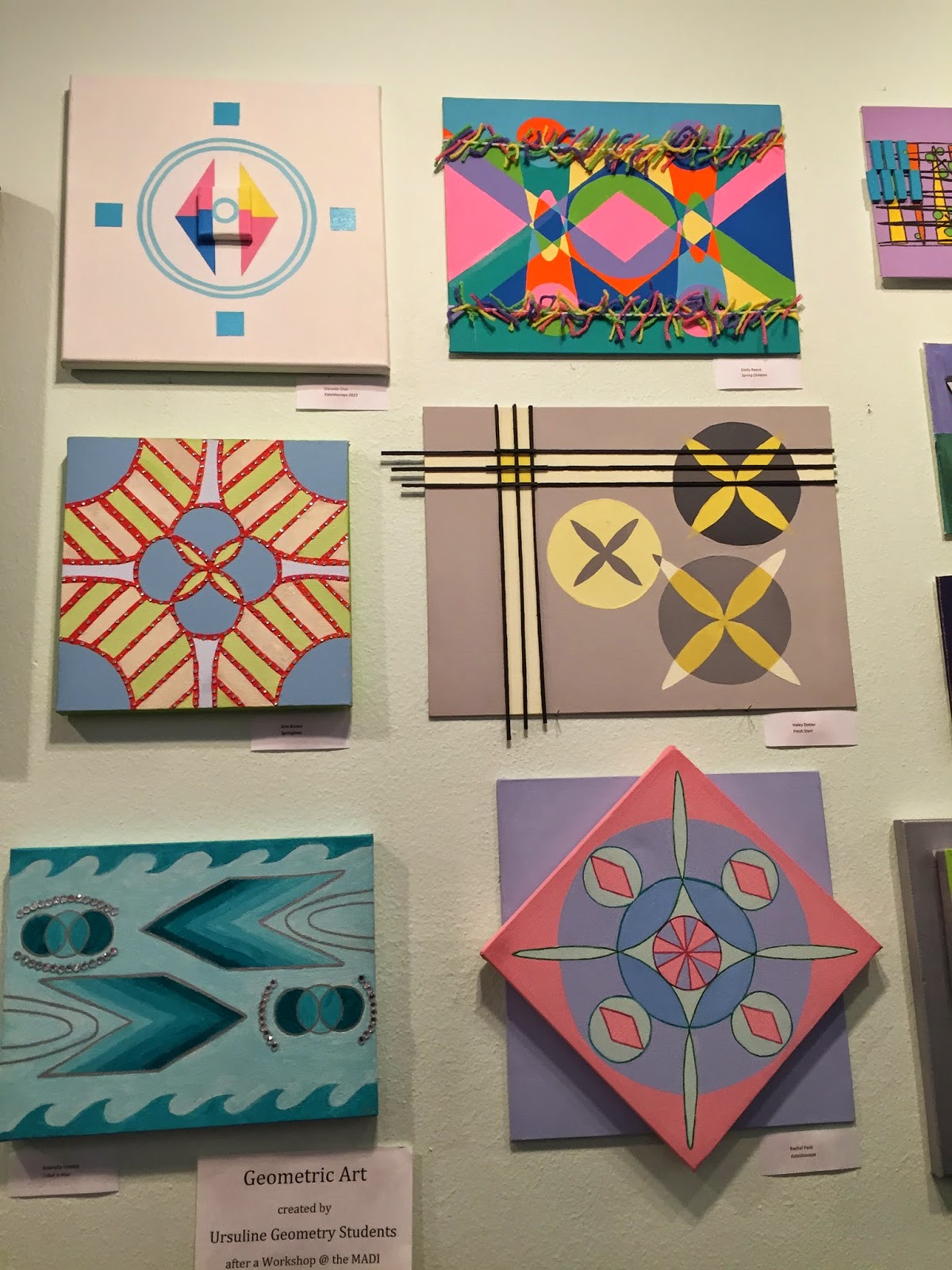By
Megan Hancock
Imagine
you are a student in a high school Geometry class. Which scenario sounds more appealing?
- Your teacher gives notes about different geometric concepts and sometimes shows examples of how to use these concepts outside of the classroom.
- You go on a field trip to a geometric art museum and learn about different geometric concepts through studying art.
 I
recently visited The Museum of Geometric and MADI Art in Dallas. MADI stands for movement, abstraction,
dimension, and invention. This museum is filled with bright colored art that is
made solely out of geometric shapes.
Much of the artwork in this museum spills off the traditional
canvas. Artwork comes from around the
world, and students can also display their own geometric art.
I
recently visited The Museum of Geometric and MADI Art in Dallas. MADI stands for movement, abstraction,
dimension, and invention. This museum is filled with bright colored art that is
made solely out of geometric shapes.
Much of the artwork in this museum spills off the traditional
canvas. Artwork comes from around the
world, and students can also display their own geometric art.
For centuries, different cultures
have been integrating different aspects of Geometry into their artwork. This artwork could consist of quilts, designs
on clothing, sculptures, paintings, or photography. In the American colonies, women used quilting
as a social gathering. They would use
these quits as their artistic expression.
African American women were even able to purchase their freedom from
slavery with their beautiful, handmade quilts (Zaslavsky, 1996, p. 145). Shapes, symmetry, rotation, measurement,
tessellations, and reflections are all geometric concepts that are present in
quilts.
 When
studying tessellations in high school Geometry, students can discover which
shapes will tessellate and which will not. The National Council of Teachers of
Mathematics (NCTM) created the lesson, “What’s Regular About Tessellations?”, that guides students
through the discovery of why certain shapes will not tessellate. This lesson is geared towards a middle school
mathematics classroom, but it could easily be tweaked to fit in a geometry
course. After students understand what
makes shapes tessellate, they can create their own pieces of artwork using
tessellations. If the students have
already visited The Museum of Geometric and MADI Art, they can use the artwork
to inspire their own pieces.
When
studying tessellations in high school Geometry, students can discover which
shapes will tessellate and which will not. The National Council of Teachers of
Mathematics (NCTM) created the lesson, “What’s Regular About Tessellations?”, that guides students
through the discovery of why certain shapes will not tessellate. This lesson is geared towards a middle school
mathematics classroom, but it could easily be tweaked to fit in a geometry
course. After students understand what
makes shapes tessellate, they can create their own pieces of artwork using
tessellations. If the students have
already visited The Museum of Geometric and MADI Art, they can use the artwork
to inspire their own pieces.
Students
can also use tangrams in a high school Geometry classroom. Students probably played with tangrams when
they were little, so they would be familiar with them. Tangrams are interesting because the area
will always be the same, but the perimeter will change depending on what shape
is created. Students might assume that
the area and perimeter will always be the same if the same shapes are being
utilized, but they can discover this is not the case. A larger unit or lesson could be created
around this concept in a high school classrooms, and tangrams could be one of
the tools that is provided.
 |
| Retrieved from http://www.teacherwebshelf.com |
By
incorporating art in a high school geometry classroom, students are able to
understand how the concepts they learn in class are used outside of the
classroom. Students who are interested
in art but not mathematics are given an opportunity to use their talents when
creating their own pieces of art. As a math teacher, I am always on the lookout
for examples of mathematics in the real world.
High school students struggle to see how mathematics relates to their
lives outside of the classroom, so by taking students to museums such as The
Museum of Geometric and MADI Art, they are able to make connections between
mathematics and art.
Blasjo,
V. (2009). Two applications of art to
geometry. The Montana Mathematics Enthusiast, 6(3), 297 – 304.
Zaslavsky, C.
(1996). Multicultural math classroom: Bringing in the world. Portsmouth, N.H.: Heinemann.



No comments:
Post a Comment